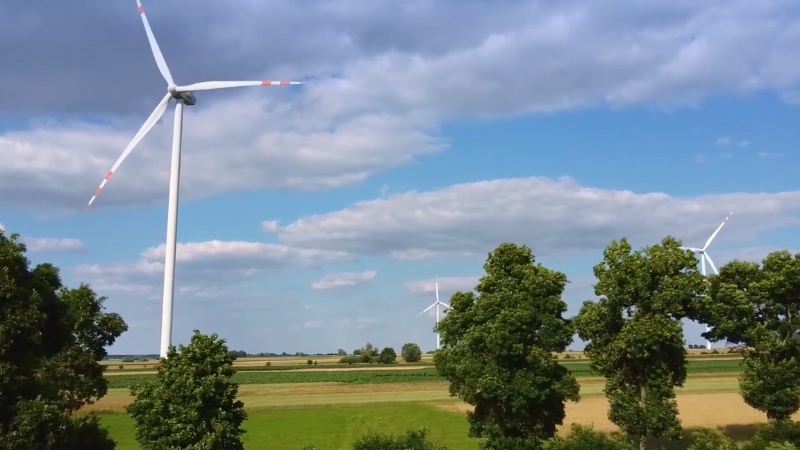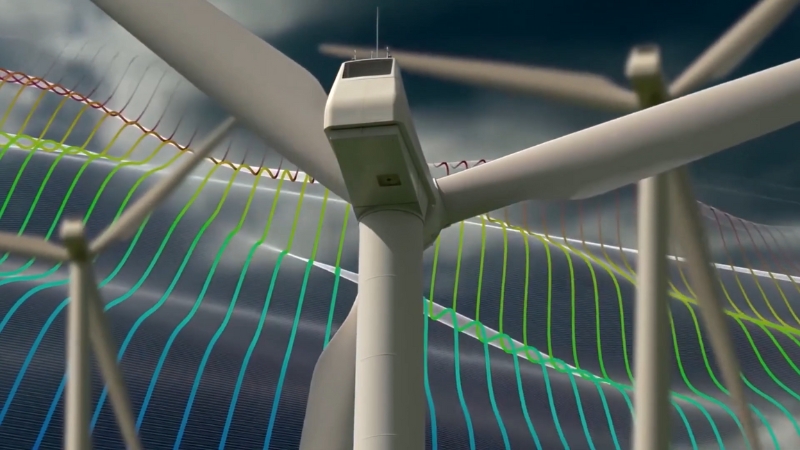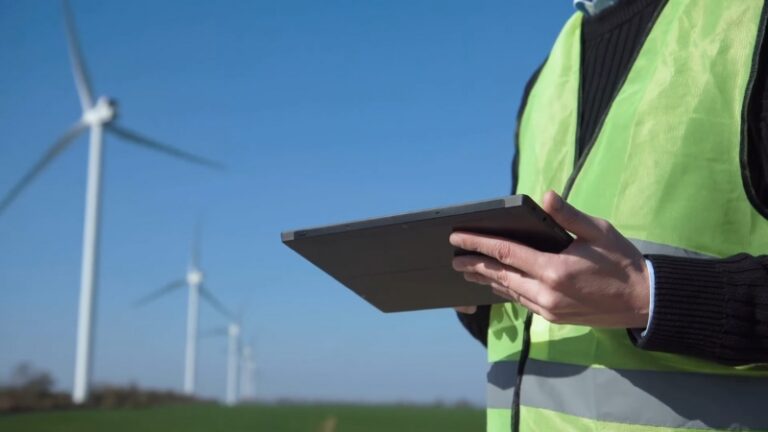If you’ve ever driven past a wind farm and seen those massive white blades spinning in the sky, you’ve likely been looking at horizontal axis wind turbines (HAWTs).
These are the most common types of wind turbines used around the world today, from the plains of Texas to the North Sea coasts.
In simple terms, they work by converting the kinetic energy of the wind into mechanical rotation and then into electricity. But the process is far more fascinating and precise than it looks from the roadside.
Each rotation of those blades represents a well-orchestrated interaction between aerodynamics, physics, and electrical engineering.
The Basic Working Principle
A horizontal axis wind turbine captures wind energy through its blades, which are mounted on a rotor connected to a central shaft. As the wind flows across the blades, it creates lift, similar to how airplane wings generate lift, causing the blades to spin.
Unlike vertical axis wind turbines, which can capture wind from any direction, horizontal axis models must face into the wind for optimal performance.
This spinning motion turns the main shaft, which connects to a gearbox and generator inside the nacelle (the large housing at the top of the tower). The generator then converts the mechanical energy into electrical energy, which is fed into the power grid.
In short:
Key Components and Their Roles
Component
Function
Key Details
Rotor Blades
Capture kinetic energy from the wind
Shaped like airplane wings; typically 2 or 3 per turbine; lengths can exceed 80 meters on utility-scale models.
Hub
Connects blades to the main shaft
Transfers rotational motion efficiently.
Main Shaft
Carries rotational energy to the gearbox
Supported by heavy-duty bearings to minimize friction.
Gearbox
Increases rotational speed
Converts slow rotor speed (~10–20 rpm) into high-speed rotation (~1500 rpm) suitable for the generator.
Generator
Produces electricity
Uses electromagnetic induction; can be synchronous or asynchronous.
Nacelle
The house’s main mechanical components
Protects gearbox, shaft, and generator from weather and vibration.
Yaw System
Rotates the turbine toward the wind
Sensors and motors ensure the rotor faces the optimal wind direction.
Tower
Supports the nacelle and rotor
Usually 80–120 meters tall; made of steel or concrete for stability.
Control System
Manages turbine performance and safety
Monitors wind speed, direction, and mechanical stress; adjusts blade pitch and yaw.
The Aerodynamics Behind the Spin

The aerodynamic design of the blades is crucial. Each blade is an airfoil, thicker at the root and thinner at the tip, optimized to maximize lift while minimizing drag.
When wind passes over the curved surface, air pressure on one side drops, creating lift that causes the rotor to spin. However, the turbine must operate within specific wind speed limits:
Wind Speed Range
Turbine Response
0–3 m/s (Cut-in)
Turbine remains idle; wind is too weak.
3–12 m/s (Optimal)
A turbine generates electricity efficiently.
12–25 m/s (Rated Power)
The turbine produces maximum output.
>25 m/s (Cut-out)
Automatic shutdown to prevent damage.
Modern turbines use pitch control, adjusting the angle of the blades, to regulate rotation speed and power output. This prevents overloading during strong winds while keeping performance steady under normal conditions.
The Role of the Gearbox and Generator
Most HAWTs use a gearbox to match the slow speed of the rotor with the high rotational speed required by the generator. A typical 2 MW turbine’s rotor might turn at just 15 rpm, while the generator operates best near 1500 rpm.
Some newer models, called direct-drive turbines, skip the gearbox entirely, using a large, low-speed generator instead. This design reduces maintenance and mechanical losses but requires stronger magnets and advanced materials.
Yaw and Pitch Control Systems

Wind direction constantly shifts, and for maximum efficiency, the turbine must always face directly into it.
The yaw system, using sensors, motors, and controllers, rotates the entire nacelle horizontally to align with the wind. Meanwhile, the pitch system adjusts the angle of each blade.
These combined systems allow the turbine to adapt dynamically to changing wind conditions, maintaining stable and safe operation.
Power Conversion and Grid Integration
Once the generator produces electricity, it’s typically in the form of alternating current (AC) with variable frequency. Before feeding it into the grid, the turbine’s power electronics convert it into a steady, grid-compatible frequency (often 50 or 60 Hz, depending on the country).
This is done through a power converter that stabilizes voltage and frequency, ensuring reliable delivery of clean electricity.
Step
Process
Output
1
The generator produces AC at a variable frequency
10–1000 Hz
2
A rectifier converts AC to DC
Stable DC current
3
Inverter converts DC back to grid-frequency AC
50 or 60 Hz
4
A transformer increases voltage for transmission
690 V → up to 33 kV
Efficiency and Energy Output
View this post on Instagram
Horizontal axis turbines are highly efficient, often converting 40–50% of available wind energy into electricity under ideal conditions. This performance is close to the theoretical Betz limit, which states that no wind turbine can capture more than 59.3% of wind’s kinetic energy.
Large modern turbines (3–5 MW) can power thousands of homes per year, depending on average wind speeds at their site.
Turbine Size
Rotor Diameter
Power Capacity
Annual Output (avg)
Small (Residential)
5–10 m
5–20 kW
Up to 40,000 kWh
Medium (Community)
30–50 m
250–500 kW
1–2 million kWh
Utility-Scale
100–160 m
2–6 MW
6–20 million kWh
Advantages and Limitations
While horizontal axis wind turbines dominate the global market, they aren’t without challenges.
Advantages
Limitations
High efficiency in consistent wind areas
Complex installation and maintenance
Mature, proven technology
Requires tall towers and strong foundations
Suitable for large-scale wind farms
Sensitive to turbulence in uneven terrain
Easier integration with existing grid systems
Visual and noise impact in some regions
Bottom Line
@arlogao Horizontal-axis wind turbines can operate in environments as cold as minus 40 degrees Celsius, requiring low wind speeds while delivering high output efficiency. Their power range from 1 kilowatt to 500 kilowatts makes them suitable for diverse applications.#windturbine #windpower #windfarm #freeenergy #newenergy ♬ C260(Lak House)(剪辑版) – Jamvana
Horizontal axis wind turbines represent the culmination of decades of engineering, sleek, powerful machines that transform invisible air currents into tangible electricity. Their aerodynamic precision, advanced control systems, and scalability make them the backbone of modern wind energy production.
Whether onshore in the American Midwest or offshore in the North Sea, HAWTs are quietly redefining how the world produces power, one gust at a time.

